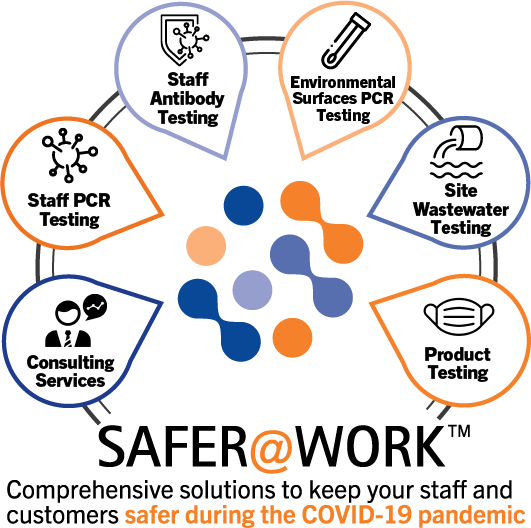
In the latest edition of our HR Improve series, we consider the steps employers can take to improve diversity, equity and inclusion within the workplace.
What is DE&I?
Diversity, equity and inclusion (DE&I) is a phrase we commonly hear in the context of work and workplace culture, but what does it mean in practice?
Whilst diversity reflects the range of backgrounds and characteristics of the workforce, equity is treating individuals fairly based on their needs and inclusion refers to the efforts an organisation makes to integrate everyone at work so that they have a sense of belonging and respect and can speak freely. Whilst diversity, equity and inclusion complement each other, the presence of one, does not mean the others will always follow. A diverse demographic does not always mean an inclusive culture and vice versa, for example.
Why is DE&I important?
It is widely known that promoting DE&I has a positive effect on a workforce, with some studies even suggesting a correlation between diversity and innovation rates. It is suggested that collaborative efforts from people with varied backgrounds and different ways of thinking can produce more creative results.
There is also increasing interest in an organisation’s approach to DE&I in the context of the social pillar of their ESG credentials, with workers, customers, investors and regulators placing a greater focus on how employers act ethically and responsibly. A workplace culture that promotes DE&I will attract and retain talent more easily, increase motivation and productivity and ultimately enhance the organisation’s reputation.
Creating a diverse workforce operating within an equal and inclusive culture, however, is not necessarily straightforward, so what tools can an employer use to measure and achieve this?
Workplace Surveys
It is impossible to address any gaps in the workplace if an employer does not know they exist, so a survey is an excellent starting point. It is a simple, yet effective tool that can be used to get a feel for the workplace culture and identify areas for improvement that would not otherwise be immediately obvious.
A well-positioned survey allows employers a valuable insight. It enables employees to share their feedback honestly without the fear of any repercussions (providing their answers remain anonymous). An employer can use these responses to assess genuine employee engagement and identify any areas which may need fine tuning. For example, it may become apparent that certain policies and procedures are no longer relevant to the workforce and are in need of review. Furthermore, there may be a need for additional policies in response to a changing workforce. We saw the implementation of flexible and remote working policies as a result of the Covid-19 pandemic and many organisations have chosen to retain these policies permanently, in response to employee feedback. The new way of working allows greater flexibility and fosters a more inclusive environment by accommodating those who may have difficulty accessing the office.
Surveys can be issued at intervals most appropriate for the individual organisation. Results can be compared year on year, or quarterly (if required) to assess whether any measures implemented have been effective in achieving their aim, or at least moving in right direction.
Workplace Networks
In response to the survey feedback, it may be that certain networks can be created within an organisation to address some of the gaps. An employee network is a group of employees who share similar cultures, backgrounds or interests. These networks can be used to provide support to individuals, create a sense of community and act as a voice for employees on both an individual and collective level.
They can be used as a platform to drive change within an organisation, raising awareness on current issues and feeding back ideas to management. It demonstrates to employees that their feedback is not only encouraged, but listened to and taken seriously. It also provides a valuable support group (or multiple groups) to those who may be facing challenges at work, promoting that all important community feel.
Supporting family friendly practices
Enabling the workforce to achieve a true work-life balance is another way in which organisations can foster DE&I. This could include enhancing pay during family-friendly leave as well as extending the amount of leave that can be taken.
Clear policies and procedures
Being clear that the organisation has a zero-tolerance approach to discrimination, and ensuring that policies and procedures reflect this, will also be important. Ensuring that workers know how to raise concerns and have the confidence to do so will help employers to enforce this approach. Not only does this require clear policies to be in place but also managers to be appropriately trained on how to handle issues when they arise.
It is also important to ensure that workplace policies and practices do not alienate or indirectly discriminate against any minority group.
Visible role models
It is difficult to change a culture within an organisation unless there are role models from diverse backgrounds who are willing to advocate for and monitor DE&I issues within the workplace and support colleagues. It is particularly important for there to be role models at a senior level, to demonstrate that the organisation is committed to DE&I issues from the top down.
Ongoing process
Gaining an insight into workplace culture, identifying and bridging the gaps where needed, and achieving a truly diverse, equitable and inclusive workplace culture will not be achieved overnight. Organisations need to commit to not only implementing the steps outlined in this article, but continuously monitoring, updating and adding to them, if they truly want to effect change.









